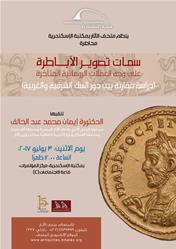The Characteristics of Depicting Emperors on Late Roman Empire Coinage: A Comparative Study between Eastern and Western Mints
Posted on

The BA Antiquities museum is organizing a lecture titled “The Characteristics of Depicting Emperors on Late Roman Empire Coinage: A Comparative Study between Eastern and Western Mints” to be held on Monday, 3 July 2017 at the BA Conference Center (BACC), Room (C), at 12:00 noon. The lecture will be delivered by Dr. Eman AbdElkhalek, archaeological awareness official at the Egyptian Antiquities Sector and at the Marina Archeological Site, and the Egyptian Antiquities Sector coordinator at the Cultural Development Department, the Minister of Antiquities office.
The researcher will discuss Emperor Diocletian’s reform program during the late 3rd century CE and how it led to a change in the orientations of the Roman Empire.This change then resulted in processing the portraits of emperors on coins using different artistic techniques and methods.
It is noteworthy that the technical methodof depicting the portraits of emperors on coins had gone through three stages of developmentduring the period from the reign of Emperor Diocletian until the end of the Late Roman Empire. The first stage started with Diocletian’s currency reform and ended with the beginning of the reign of Constantine the Great. The second stagewas during Constantine the Great’s reign and the third stage started during his sons’ reign and lasted until the end of the Late Roman Empire.
Said stages inform us that Diocletian’s illustrationstyle—which lacked distinct and clear features todistinguish each emperor—was the starting pointfor the art of coinage portraits in the 4th century CE to adopt a symbolic approach.
Due to his grand rank and status, Constantine the Great’s features and depiction weregenerally illustratedon coins for about three centuries.